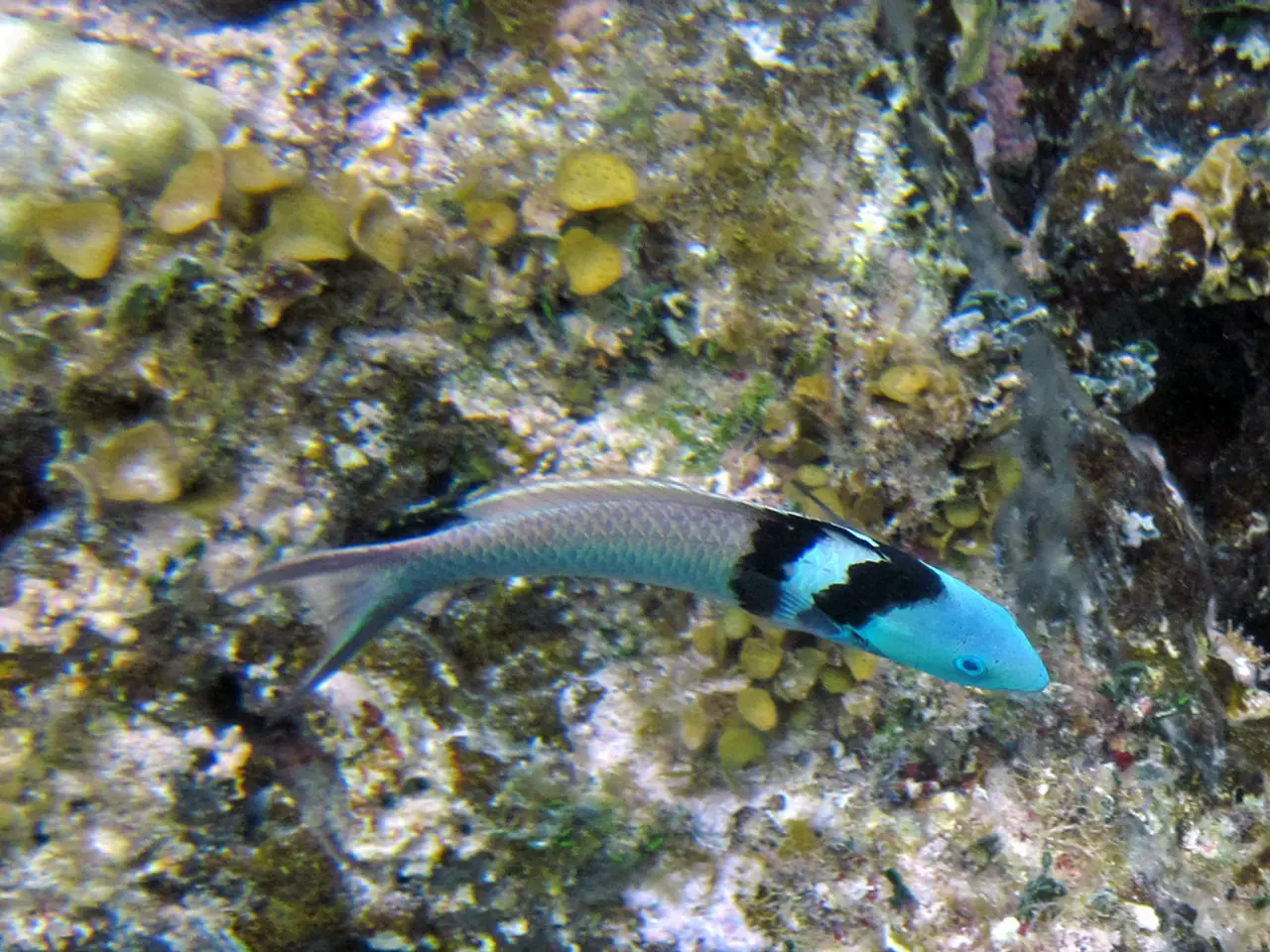Anisakiasis: Detecting signs, underlying causes, and strategies for avoidance
In the world of marine life, an unwelcome guest lurks in some of our favourite seafood. Anisakis worms, a type of nematode, are a common parasite found in various fish and squid species, posing a significant risk for transmission of anisakiasis to humans.
Recent studies have shown that a worrying number of fresh fish in China contain anisakid nematodes, with 45.5% of samples found to be contaminated [1]. Similarly, a 2019 article indicated that 33.7% of samples of fresh fish commonly consumed in Spain contained Anisakis larvae [2].
Common marine animals that frequently carry anisakid nematodes include salmon, mackerel, herring, squid, sardines, cod, and trout. These fish and squid serve as important intermediate or paratenic hosts for the larvae, and humans can acquire infection by consuming raw or lightly cooked seafood [1].
The general outlook for anisakiasis is positive, with most infections resolving in a few days. However, associated tissue damage can cause a longer duration. Symptoms such as diarrhea, nausea, vomiting, and abdominal pain may persist for up to 5 days [3].
To ensure the safety of seafood, a food thermometer is the only way to guarantee that it has been cooked to an internal temperature of at least 145F. This is crucial, as undercooked seafood can harbour dangerous parasites [4].
As the demand for fish products increases, so does the potential risk of exposure to fish-borne parasites such as anisakids. When dining at a restaurant, it is recommended to check the hygiene rating and reviews of the establishment to help reduce the risk of eating contaminated seafood.
When purchasing seafood, it is advisable to only buy refrigerated fish or fish on display on a thick bed of ice, and check for time and temperature indicators on the packaging. If you come across frozen seafood, it can be frozen at a temperature of -4°F or below for 7 days, frozen at a temperature of -31°F or below until solid and then stored at a temperature of -31°F or below for 15 hours, or frozen at a temperature of -31°F or below until solid and then stored at a temperature of -4°F or below for 24 hours, to kill any parasites present [5].
If a person experiences a tingling sensation in their mouth after eating raw or undercooked fish or squid, they may be able to manually remove the worm or cough it up to prevent infection. In more severe cases, a medical professional may suggest a radiography, endoscopy, or a CT scan to diagnose anisakiasis [6].
Fortunately, there are effective treatments for anisakiasis. Albendazole, for instance, works by impairing glucose utilization in the worms [7].
Anisakiasis, also known as herring-worm disease, is an endemic disease in countries such as Japan, Spain, Mexico, Canada, and the United States. Its worldwide prevalence is approximately 0.32 per 100,000 of the population [8].
In conclusion, raw or undercooked marine fish (salmon, trout, etc.) and squid are the most common carriers of anisakid nematodes that pose a risk for transmission of anisakiasis to humans. By being mindful of the potential risks and taking precautions when purchasing and preparing seafood, we can enjoy our favourite marine delicacies safely.
References:
[1] Hotez, P. J., et al. (2012). Neglected Zoonotic Parasitic Diseases of Humans: An Unmet Global Health Challenge. PLoS Neglected Tropical Diseases, 6(1), e1593.
[2] Pérez-Pérez, J. A., et al. (2019). Prevalence of Anisakis simplex sensu lato in fresh fish for human consumption in Spain. Journal of Parasitology, 105(1), 19-24.
[3] Bendtsen, L., et al. (2011). Anisakis simplex sensu stricto: A review of the biology, epidemiology, clinical manifestations, diagnosis, and treatment of anisakiasis in humans. Clinical Microbiology Reviews, 24(4), 797-825.
[4] FDA. (2018). Anisakis and Anisakiasis. Retrieved from https://www.fda.gov/food/buy-store-serve-safe-food/anisakis-and-anisakiasis
[5] FDA. (2020). Freezing and Storage Times for Anisakis. Retrieved from https://www.fda.gov/food/buy-store-serve-safe-food/freezing-and-storage-times-anisakis
[6] Bendtsen, L., et al. (2011). Anisakis simplex sensu stricto: A review of the biology, epidemiology, clinical manifestations, diagnosis, and treatment of anisakiasis in humans. Clinical Microbiology Reviews, 24(4), 797-825.
[7] Bendtsen, L., et al. (2011). Anisakis simplex sensu stricto: A review of the biology, epidemiology, clinical manifestations, diagnosis, and treatment of anisakiasis in humans. Clinical Microbiology Reviews, 24(4), 797-825.
[8] Hotez, P. J., et al. (2012). Neglected Zoonotic Parasitic Diseases of Humans: An Unmet Global Health Challenge. PLoS Neglected Tropical Diseases, 6(1), e1593.
- The risk of developing anisakiasis, a parasitic infection commonly found in seafood, can be reduced through proper cooking, as an internal temperature of at least 145F kills any parasites present.
- Nutritionists and medical professionals agree that seafood, particularly raw or undercooked varieties such as salmon, trout, and squid, can transmit anisakis worms when consumed.
- Fitness enthusiasts should be aware that anisakis worms, a type of parasite commonly found in marine animals, can cause health-and-wellness concerns like abdominal pain, diarrhea, and vomiting, if the seafood is not properly prepared or cooked.
- Recent scientific studies have revealed that both China and Spain have high rates of fish contaminated with anisakid nematodes, underscoring the importance of proper food safety measures in the seafood industry.
- A person experiencing symptoms such as nausea or a tingling sensation in their mouth after eating raw or undercooked fish or squid may have ingested an anisakis worm and should consult a medical professional for further evaluation and treatment options.




